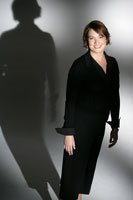Money Saving Water Conservation Tips
 It is estimated that by the year 2016 as many as 36 states will be experiencing serious water issues. Of course, Arizona is a hot spot for efforts to reduce water usage. As with most areas, our water supply is fixed - there aren't any new sources available. So, we must learn to be more efficient with the water we do have. Only by conserving this limited resource will we be able to sustain population growth which has been a driving force behind our economy for quite some time. The focus for water conservation is sustainable water management - making the best use of what we have to serve the needs of the people who are already here, as well as new population growth for the future. The key to this effort is education and awareness.
It is estimated that by the year 2016 as many as 36 states will be experiencing serious water issues. Of course, Arizona is a hot spot for efforts to reduce water usage. As with most areas, our water supply is fixed - there aren't any new sources available. So, we must learn to be more efficient with the water we do have. Only by conserving this limited resource will we be able to sustain population growth which has been a driving force behind our economy for quite some time. The focus for water conservation is sustainable water management - making the best use of what we have to serve the needs of the people who are already here, as well as new population growth for the future. The key to this effort is education and awareness.
In your home, the single biggest water use comes from flushing toilets. This is followed closely by your clothes washer, then shower and faucet use. A surprisingly large amount of water is wasted in leaks- over 13% of average residential use!
There are a number of easy, inexpensive ways to positively impact your personal water use:
Water your lawn less often
Take shorter showers
Turn off the water while brushing your teeth
Run only full loads in the clothes and dishwasher
Install faucet aerators
Repair leaks
Replace older toilets with new 1.28 gpf HET or dual-flush toilets.
You may remember when the EPA mandated that all toilets be no more than 1.6 gpf and that shower heads be 2.5 gpm maximum in 1992- and how poorly they functioned. This left a bad impression in many people's minds about water conserving fixtures. The good news is that technology has vastly improved since then. I can attest to this from personal experience- having just replaced an even older toilet (probably from the 1980's and using 3.5 gpf or more) to the new HET 1.28 gpf model in my own home- the new one works great!
The newer WaterSense shower heads only use 2.0 gpm, and also work really well- the difference is not even noticeable. Another annoying issue that you've likely experienced is the gallons and gallons of water wasted waiting for the hot water to reach the shower. By installing a hot water recirculation system, you get the convenience and luxury of instant hot water AND save an average of 5 gallons every time you shower! If you are building a new home, the cost to install the system is around $200 or less, plus labor. They also have retrofit systems available, which typically run less than $1000installed.

Sensor faucets (the kind you often find in public restrooms, where you don't have an on/off lever) are now available for residential use in both kitchens like the Delta Touch shown here, and baths. These fixtures save water by shutting off automatically... and they are also more hygienic because dirty, germy hands never touch the fixture.
Many local water utilities are making changing to more efficient fixtures very affordable by offering cash or credit rebates on your water bill. In Scottsdale, for instance, a new high-efficiency toilet earns a credit of $75-$100, and new low flow shower heads also earn credit for each one installed. Check with your local utility to find out the options where you live. In any case, your water bill will be lower because you will use far less water if you implement these strategies!

























































